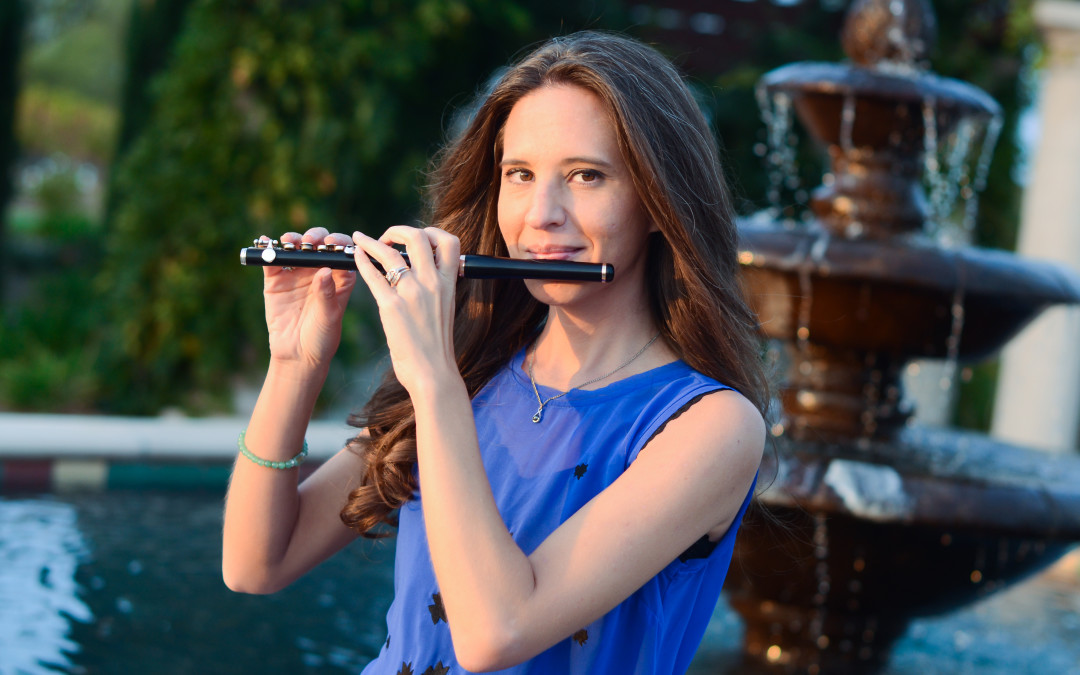By Kate Prestia-Schaub
In preparation for an upcoming performance of the Vivaldi Piccolo Concerto in A Minor, I reflected upon many years of studying this piece, and realized that I needed to start all over again. I first learned the concerto in high school, and felt pretty great about it too! Little did I know at the time, that intricate details would develop as a result of my various teachers, studying different editions, listening to a wide variety of recordings (and live performances), and watching YouTube videos! I was asked to adjudicate the NFA piccolo competition recorded round this year, and the contestants recorded the C Major concerto. There was a significant difference between those who had a broader stylistic understanding of the music, and those who simply played “notes on the page”. After hearing this competition, I went back to the various live performances I had recorded of myself over the years, and after the desire to hurl the discs of some of the early versions under my car tire, I came out from my cave and realized that each of those performances was a stepping stone for what I have come to for this performance.
In high school, I believe I snuck the piece out of my Mom’s closet, and worked on it until I was caught notpracticing my Taffanel-Gaubert! I had a few lessons on it with Mamacita, and I was taught the basic principles of Baroque ornamentation, correct phrasing, where to breathe and not to breathe, and how to create some variety by using a dynamic echo on repeated patterns. I have to admit now, that I spent more time practicing that difficult triplet passage at the end of the first movement than really working on the rules of ornamentation and phrasing. (Sorry Mom!)
At some point shortly after high school, I heard Mary Kay Fink perform this at an NFA convention, and I was amazed at her ability to embellish the 2nd movement. Her performance was one of those that inspired me to reaffirm my “I’m gonna do that someday” statement! At that point I added one or two feeble noodles in the 2nd movement, but was too bashful to really step away from the written note.
While studying for my undergraduate degree with Tom Robertello at Indiana University, I revisited the piece and we focused on the concept of using the articulation to help with dynamic contrast. We also talked about a common practice of using fewer slurs in 16th note passages for Vivaldi. For example, when playing softer, I was taught that using a staccato articulation would create the illusion of softer dynamics, and legato would help with louder dynamics. I came to understand that entire phrases can be created by utilizing a wide range of dynamics, without using a slur, without using vibrato; simply by changing the articulation. Mind Blown!
During my graduate degree at USC, I studied this piece again with Jim Walker, and focused on adding in a few slurs here and there to create a little more variety, and also make the piece sing on a modern instrument. I studied, in depth, the ornamentation practices of Vivaldi with Janet Beazley, also at USC, and from her, I was encouraged to really explore the 2nd movement, and take more risks by stepping away from the written notes. After 5 years of theory, 2 baroque studies classes, I was ready to try again!
During that time, I performed this piece with piano for the NFA Young Artist Piccolo competition with winning success, but little did I know that I’d take an entirely different approach 10 years later when performing this with a chamber orchestra.
Currently, I am in preparation for a performance with a wonderful group – The California Chamber Orchestra. For this, I have studied many recordings of traditional baroque string ensembles trying to, once again, familiarize myself with the “Vivaldi” style of bowings, ornamentation, vibrato, dynamics, and tempi. Trying to match my playing to what a small string ensemble would do has changed my thoughts yet again on what to do with this piece.
Here are some questions I have asked myself in attempting to really make this “my own”. It is from this process that I have developed the deepest respect for all of the teachers who have diligently spent time teaching me their points of view, doing their own research, and making the piece their “own” over the course of their careers. It is a delicate process in current times, of creating a scholarly performance performing on a modern instrument.
- How would I like to hear this if I were in the audience, and if it were a different kind of audience, how would I change it?
- What is the “right” way to play each phrase, keeping in mind the practices of Vivaldi?
- Can I show off my beautiful modern instrument, or simplify my sound and concept of the piece to match the type of instrument used in Vivaldi’s time?
- How will I blend with the strings in dynamics, articulation, and ornamentation? What are my limitations and strengths, what are theirs, and how can we blend them?
- Shall I vibrate, or not vibrate; articulate all 16th notes, or add slurs?
- How much can I stray from the written notes in the 2nd movement? Adventurous and exciting, or simple and safe?
- How many extra ornaments may I add in the 1st and 3rd movement, and can I add a cadenza-like section where I really pause, and then speed up?
- How can I make it my own and not directly mimic my favorite recording, or edition?
For me, the balanced approach has won out, at least for this performance. Here are some of the decisions I have planned out so far, and some reasoning behind them:
- The audience will be a wide variety of classical music lovers. There will be a mix of senior citizens, students, and a handful of other musicians, but not a majority of true baroque experts; therefore, I will lean on a more classical approach to my sound. This decision is also made because I believe it helps a general audience appreciate the sound of the piccolo as a solo instrument, and not a screeching marching band instrument.
- The orchestra will be playing on all modern instruments, and other music on the program will be either Baroque or Classical, so I will lean on the late baroque style of ornamentation for a better blend with the rest of the program.
- I have taken about 3 editions and 4 recordings, and blended my own ornamentation for the 2ndmovement, and it is different than I have ever performed before, and yes – virtuosic!
- I have determined to use a more modern approach on vibrato because of the performance venue. Without it, I believe that the projection over the chamber orchestra will be lost.
- I will use a wide variety of articulations, with a moderate amount of slurs, and ultimately I hope to create the most dynamic contrast by the use of staccato vs. legato during each phrase.
- I have eliminated many “echo” patterns, and replaced them with more of a forward moving phrase using a constant dynamic shift, so as not to disrupt the line with a subito piano, although a few are left for variety. My hope is not to play every repeated phrase the same way, but to creatively form a musical line with simple, yet effective articulation shifts.
- There will only be one rehearsal, and since I have mixed and matched many different editions, I will have to be sure to go over these decisions with the conductor to make sure that she can give a heads up to the principals before the entire group arrives. If these decisions are not noted at the rehearsal, I will have to be extremely flexible at the time of the performance, relying on listening and blending with the group so as not to stick out like a sore thumb.
So, what I thought in high school was a cute little piccolo piece has been continuously evolving for over a decade – almost two!! If I can be humble enough and allow myself to continue learning, I will be able to let these concerti, as well as other standard repertoire for both flute and piccolo evolve as this has, and hopefully, the result will be a more refined and enjoyable performance for the audience!

